Decoding Pregnancy Cravings: Healthy Swaps and Smart Choices
Pregnancy is a transformative journey, a symphony of physiological changes orchestrated by hormones and fueled by an ever-growing life within. Among the myriad of experiences that define this period, pregnancy cravings stand out as a particularly intriguing and often perplexing phenomenon. These sudden, intense desires for specific foods, sometimes bizarre and seemingly out of character, are a common and accepted part of the pregnancy narrative. But what lies beneath the surface of these cravings? Are they merely whimsical indulgences, or do they hold deeper clues about the body’s needs and desires during this crucial time?
Understanding the origins and implications of pregnancy cravings is crucial for both expectant mothers and their healthcare providers. While occasional indulgences are generally harmless, consistently yielding to unhealthy cravings can negatively impact both maternal and fetal health. Conversely, making informed and healthy substitutions can transform cravings into opportunities to nourish the growing baby and maintain a healthy pregnancy. This article aims to delve into the science behind pregnancy cravings, exploring their potential causes, offering practical strategies for managing them effectively, and providing a comprehensive guide to healthy swaps that satisfy cravings without compromising nutritional needs.
1. The Enigmatic Nature of Pregnancy Cravings:
Pregnancy cravings are characterized by their sudden onset, intensity, and specificity. They often differ significantly from a woman’s pre-pregnancy food preferences. Commonly reported cravings include sweet treats like chocolate and ice cream, salty snacks like pickles and chips, and comfort foods like pasta and mashed potatoes. However, the spectrum of cravings is remarkably diverse, ranging from seemingly normal food items to bizarre combinations and even non-food substances, a phenomenon known as pica. [mfn 1]
The onset of cravings typically begins in the first trimester, peaking in the second, and gradually diminishing towards the end of the third. [mfn 2] The intensity and frequency of cravings can vary significantly from woman to woman and even between pregnancies. Some women experience only mild urges, while others find themselves consumed by persistent and overwhelming desires.
Despite their prevalence, the exact reasons behind pregnancy cravings remain a subject of ongoing research and debate. Several theories have been proposed, each offering a potential piece of the puzzle.
2. Unraveling the Mysteries: Potential Causes of Pregnancy Cravings:
Several interconnected factors are believed to contribute to the development of pregnancy cravings. Understanding these potential drivers can empower expectant mothers to better understand and manage their cravings.
-
Hormonal Fluctuations: Perhaps the most widely accepted explanation for pregnancy cravings lies in the dramatic hormonal shifts that occur during pregnancy. The surge in hormones like estrogen, progesterone, and human chorionic gonadotropin (hCG) profoundly affects taste and smell perception. [mfn 3] These hormones can heighten sensitivity to certain flavors and odors, making previously unappealing foods suddenly irresistible and vice versa. This heightened sensitivity can also trigger cravings for specific foods that provide sensory comfort or a temporary escape from unpleasant symptoms like nausea.
-
Nutrient Deficiencies: The theory that cravings are indicative of nutrient deficiencies has been a popular belief for years. For example, cravings for red meat are often associated with iron deficiency, while cravings for pickles or salty foods are linked to sodium deficiency. [mfn 4] While this theory holds some appeal, scientific evidence supporting a direct link between specific cravings and nutrient deficiencies remains limited. It’s important to note that many women experience cravings for foods that are not particularly rich in the nutrients they might be lacking. However, it is possible that cravings are a subconscious attempt by the body to obtain missing nutrients, even if the chosen food is not the most efficient source.
-
Emotional and Psychological Factors: Pregnancy is a time of significant emotional and psychological change. Anxiety, stress, and fluctuating moods are common experiences. Cravings can serve as a form of emotional comfort, providing a temporary distraction from worries or a source of pleasure and reward. [mfn 5] Food can trigger the release of endorphins, natural mood boosters, offering a sense of well-being and relief from stress. Furthermore, cultural and social associations with certain foods can also play a role in cravings. Expectant mothers may crave foods that evoke fond memories or provide a sense of connection to their past.
-
Changes in Taste and Smell: As mentioned earlier, hormonal changes can significantly alter taste and smell perception. This can lead to aversions to certain foods that were previously enjoyed and cravings for foods that were previously uninteresting. [mfn 6] The heightened sensitivity to smells can also trigger cravings, as certain aromas become particularly appealing or repulsive.
-
Genetic Predisposition: While research in this area is still emerging, there is some evidence to suggest that genetic factors may play a role in determining an individual’s susceptibility to pregnancy cravings. [mfn 7] A family history of specific cravings or food preferences could indicate a genetic predisposition.
-
The “Pregnancy Card”: In some cases, cravings might be amplified by the social and cultural acceptance of indulging during pregnancy. The notion of the “pregnancy card” allows women to indulge in cravings without feeling guilty, potentially leading to more frequent and intense desires.
3. Navigating the Cravings: Practical Strategies for Management:
While it’s generally acceptable to indulge in pregnancy cravings occasionally, consistently yielding to unhealthy cravings can lead to weight gain, gestational diabetes, and other health complications. Therefore, developing effective strategies for managing cravings is crucial for maintaining a healthy pregnancy.
-
Listen to Your Body: Pay attention to your body’s signals. Are you truly hungry, or are you experiencing an emotional craving? Sometimes, cravings can be a sign of dehydration or fatigue. Before indulging, try drinking a glass of water or taking a short break to see if the craving subsides.
-
Don’t Deprive Yourself Entirely: Complete deprivation can backfire, leading to even stronger cravings and potential binges. Allow yourself to indulge in moderation. If you’re craving chocolate, have a small piece of dark chocolate rather than a whole chocolate bar.
-
Find Healthy Substitutions: This is the cornerstone of managing cravings effectively. Explore healthier alternatives that satisfy the craving without compromising your nutritional needs. (See Section 4 for detailed examples).
-
Eat Regular, Balanced Meals: Skipping meals can lead to low blood sugar, which can trigger cravings. Eat regular, balanced meals that include protein, complex carbohydrates, and healthy fats to keep your blood sugar levels stable and prevent cravings.
-
Stay Hydrated: Dehydration can sometimes be mistaken for hunger or cravings. Drink plenty of water throughout the day.
-
Engage in Distraction Techniques: When a craving hits, try distracting yourself with an activity you enjoy, such as reading a book, going for a walk, talking to a friend, or listening to music. Distraction can often help to take your mind off the craving and allow it to pass.
-
Practice Mindful Eating: When you do indulge in a craving, savor each bite and pay attention to the flavors and textures. Eating mindfully can help you feel more satisfied with a smaller portion.
-
Seek Support: Talk to your partner, friends, or family about your cravings. Having a support system can help you stay accountable and manage your cravings more effectively.
-
Consult with a Registered Dietitian or Healthcare Provider: If you’re struggling to manage your cravings or have concerns about your diet, consult with a registered dietitian or healthcare provider. They can provide personalized advice and guidance based on your individual needs.
4. The Healthy Swap Guide: Satisfying Cravings Without Compromise:
The following is a comprehensive guide to healthy swaps that can satisfy common pregnancy cravings without compromising nutritional needs. These swaps focus on providing similar tastes and textures while offering a higher nutrient density and lower content of added sugars, unhealthy fats, and excessive sodium.
-
Craving: Chocolate
- Unhealthy Choice: Milk chocolate bar, chocolate cake, chocolate ice cream
- Healthy Swap: Dark chocolate (70% cacao or higher), cocoa powder in smoothies or oatmeal, homemade trail mix with dark chocolate chips, Greek yogurt with cocoa powder and berries.
- Rationale: Dark chocolate contains antioxidants and less sugar than milk chocolate. Cocoa powder provides chocolate flavor without the added sugar and fat.
-
Craving: Ice Cream
- Unhealthy Choice: Regular ice cream, milkshakes
- Healthy Swap: Frozen yogurt (lower in fat and sugar), homemade fruit sorbet, blended frozen bananas (creates a creamy texture), Greek yogurt with honey and fruit.
- Rationale: Frozen yogurt typically contains less fat and sugar than ice cream. Homemade fruit sorbet is a refreshing and healthy alternative. Blended frozen bananas offer a naturally sweet and creamy treat.
-
Craving: Salty Snacks (Chips, Fries)
- Unhealthy Choice: Potato chips, French fries, processed snack crackers
- Healthy Swap: Air-popped popcorn (seasoned with herbs and spices), baked sweet potato fries, roasted chickpeas, whole-grain crackers with avocado or hummus.
- Rationale: Air-popped popcorn is a whole-grain snack with fiber. Baked sweet potato fries provide vitamins and antioxidants. Roasted chickpeas are a good source of protein and fiber. Whole-grain crackers offer a more nutritious base for toppings like avocado and hummus.
-
Craving: Pickles and Other Sour Foods
- Unhealthy Choice: Excessive amounts of high-sodium pickles, pickled vegetables in unhealthy sauces.
- Healthy Swap: Fermented vegetables (sauerkraut, kimchi), plain Greek yogurt with lemon juice and herbs, green apples, lemon wedges to squeeze into water.
- Rationale: Fermented vegetables offer probiotics and a tangy flavor. Greek yogurt provides protein and can be customized with healthy flavors. Green apples offer a natural tartness.
-
Craving: Sweets (Candy, Soda)
- Unhealthy Choice: Candy bars, sugary sodas, processed desserts
- Healthy Swap: Fresh fruit (berries, melons, grapes), dried fruit (in moderation), fruit-infused water, herbal tea with a touch of honey, homemade fruit popsicles.
- Rationale: Fresh fruit provides natural sugars, vitamins, and fiber. Dried fruit should be consumed in moderation due to its concentrated sugar content. Fruit-infused water is a refreshing and hydrating alternative to soda.
-
Craving: Carbohydrates (Pasta, Bread)
- Unhealthy Choice: White pasta, white bread, processed pastries
- Healthy Swap: Whole-wheat pasta, whole-grain bread, quinoa, brown rice, sweet potatoes.
- Rationale: Whole-wheat pasta and whole-grain bread provide more fiber and nutrients than their refined counterparts. Quinoa, brown rice, and sweet potatoes are excellent sources of complex carbohydrates and fiber.
-
Craving: Red Meat
- Unhealthy Choice: Fatty cuts of red meat, processed meats (bacon, sausage)
- Healthy Swap: Lean cuts of red meat (sirloin, tenderloin), poultry (chicken, turkey), fish (salmon, tuna), beans, lentils.
- Rationale: Lean cuts of red meat provide iron and protein without excessive saturated fat. Poultry and fish are excellent sources of protein and omega-3 fatty acids. Beans and lentils are plant-based sources of protein and iron.
-
Craving: Cheese
- Unhealthy Choice: High-fat cheeses, processed cheese products
- Healthy Swap: Low-fat cheeses (cottage cheese, ricotta cheese, mozzarella), Greek yogurt, nutritional yeast (for a cheesy flavor).
- Rationale: Low-fat cheeses provide calcium and protein without excessive saturated fat. Greek yogurt is a versatile source of protein and can be used in savory dishes. Nutritional yeast offers a cheesy flavor and is a good source of B vitamins.
-
Craving: Fast Food
- Unhealthy Choice: Burgers, fries, pizza, fried chicken
- Healthy Swap: Homemade versions of fast-food favorites using healthier ingredients and cooking methods. For example, bake chicken instead of frying it, use whole-wheat crust for pizza, and make burgers with lean ground beef or turkey.
- Rationale: Homemade versions allow you to control the ingredients and portion sizes, making them significantly healthier than fast-food alternatives.
-
Craving: Spicy Foods
- Unhealthy Choice: Excessive amounts of spicy foods that cause heartburn or digestive upset.
- Healthy Swap: Experiment with different spices and herbs to add flavor to your meals. Ginger, turmeric, cumin, and chili powder can add warmth and depth without being overly spicy.
- Rationale: While spicy foods are generally safe during pregnancy, excessive consumption can exacerbate heartburn or digestive issues. Using a variety of spices and herbs can provide flavor without the discomfort.
-
Craving: Peanut Butter
- Unhealthy Choice: Peanut butter with added sugar and unhealthy oils
- Healthy Swap: Natural peanut butter (ingredients: peanuts only), other nut butters (almond, cashew), avocado.
- Rationale: Natural peanut butter provides healthy fats and protein without added sugar or unhealthy oils. Other nut butters offer a similar nutritional profile. Avocado provides healthy fats and a creamy texture.
-
Craving: Carbonated Beverages
- Unhealthy Choice: Sugary sodas
- Healthy Swap: Sparkling water with a splash of fruit juice or a squeeze of lemon or lime, herbal tea, kombucha (in moderation), ginger ale (in moderation, choose a brand with less sugar).
- Rationale: Sparkling water provides the fizz without the sugar and calories. Herbal tea is a hydrating and flavorful alternative. Kombucha contains probiotics, but should be consumed in moderation due to its potential alcohol content.
5. Pica: When Cravings Become a Cause for Concern:
Pica is the persistent craving and consumption of non-food substances, such as clay, dirt, laundry starch, ice, or chalk. While some women experience pica during pregnancy, it is important to address it with your healthcare provider, as it can indicate underlying nutrient deficiencies, particularly iron deficiency anemia. [mfn 8] Consuming non-food substances can also be harmful to both the mother and the baby.
If you experience cravings for non-food items, it is crucial to:
- Inform your healthcare provider immediately.
- Undergo blood tests to check for nutrient deficiencies.
- Receive appropriate treatment for any underlying conditions.
- Seek support to manage the cravings and prevent consumption of harmful substances.
6. Beyond Cravings: Maintaining a Healthy Pregnancy Diet:
While managing cravings is an important aspect of a healthy pregnancy, it is equally crucial to focus on overall dietary habits. A balanced and nutritious diet is essential for supporting fetal growth and development, as well as maintaining maternal health and well-being.
A healthy pregnancy diet should include:
- Plenty of fruits and vegetables: Aim for a variety of colors to ensure you’re getting a wide range of vitamins and minerals.
- Whole grains: Choose whole-wheat bread, pasta, brown rice, and quinoa over refined grains.
- Lean protein: Include sources like chicken, fish, beans, lentils, and tofu in your diet.
- Healthy fats: Incorporate sources like avocados, nuts, seeds, and olive oil.
- Dairy products: Choose low-fat or fat-free dairy products like milk, yogurt, and cheese for calcium and vitamin D.
- Prenatal vitamins: Take a prenatal vitamin daily to ensure you’re getting all the essential nutrients you need.
- Adequate hydration: Drink plenty of water throughout the day.
It is also important to limit or avoid:
- Alcohol: Alcohol can cause serious birth defects.
- Caffeine: Limit caffeine intake to less than 200 mg per day.
- Raw or undercooked meat, poultry, and seafood: These can contain harmful bacteria that can cause illness.
- Unpasteurized dairy products: These can also contain harmful bacteria.
- High-mercury fish: Limit consumption of fish like shark, swordfish, and king mackerel.
- Processed foods: Limit your intake of processed foods, which are often high in sugar, salt, and unhealthy fats.
7. Conclusion: Embracing the Journey with Informed Choices:
Pregnancy cravings are a common and fascinating phenomenon that can offer insights into the complex interplay of hormones, nutrients, and emotions during this transformative period. While occasional indulgences are generally harmless, consistently yielding to unhealthy cravings can negatively impact maternal and fetal health. By understanding the potential causes of cravings, implementing effective management strategies, and embracing healthy swaps, expectant mothers can navigate their cravings with confidence and make informed choices that support a healthy and thriving pregnancy. Remember to consult with your healthcare provider or a registered dietitian for personalized guidance and support. By embracing a balanced and nutritious diet, prioritizing self-care, and listening to your body’s needs, you can embark on this incredible journey with confidence and joy. Pregnancy is a time of remarkable change and growth. By making informed choices about your diet and lifestyle, you can ensure a healthy and happy pregnancy for both you and your baby.
References:
[mfn 1] Kumar, A. (2010). Pica in pregnancy. Indian Journal of Psychiatry, 52(4), 389-391. [mfn 2] Baylock, B., et al. (2017). A systematic review of the literature on food cravings in pregnancy. Journal of the Academy of Nutrition and Dietetics, 117(1), 113-126. [mfn 3] Nordin, S., & Broman, D. A. (2008). Effects of hormone replacement therapy on sensory perception. Climacteric, 11(3), 175-183. [mfn 4] Tiwary, C. M. (2014). Iron deficiency and craving for ice. American Journal of Hematology, 89(7), 730-731. [mfn 5] Hill, A. J. (2007). Food craving: Its nature and significance. Appetite, 49(1), 1-18. [mfn 6] Mennella, J. A., & Bobowski, N. K. (2005). Decreased liking for vegetables and increased sweetness preference predict vegetable and fruit intake during pregnancy. The American Journal of Clinical Nutrition, 81(3), 690-697. [mfn 7] Li, R., et al. (2015). Genetic and environmental influences on eating behaviors in childhood: A systematic review of twin studies. International Journal of Obesity, 39(6), 866-877. (Note: This refers to general eating behaviors, research specific to genetics and pregnancy cravings is still developing) [mfn 8] Barton, J. C. (2010). Pica practice: How common is it? Cleveland Clinic Journal of Medicine, 77(1), 34-36.


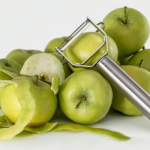












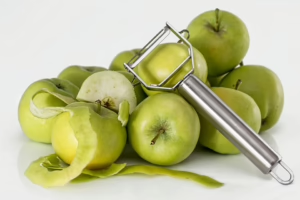

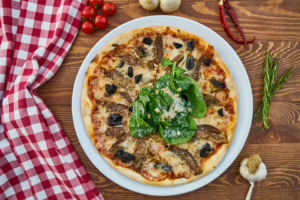
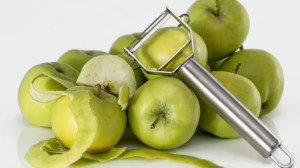

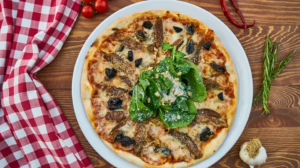




Add Comment